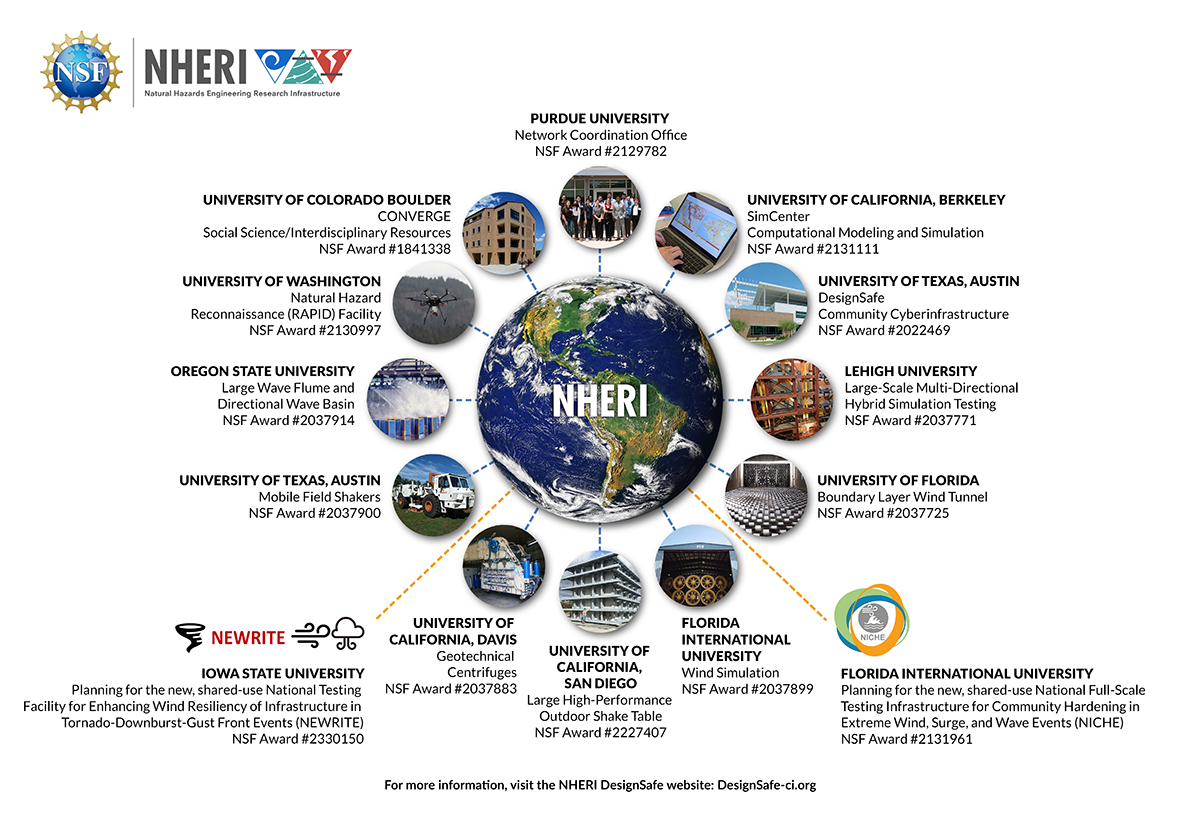About NHERI
the Natural Hazards Engineering Research Infrastructure
Funded by the National Science Foundation, the Natural Hazards Engineering Research Infrastructure, NHERI, is a nation-wide, shared-use network of facilities tailored for the natural hazards engineering research community. Investigators employ our sites to test innovative ideas for mitigating damage from earthquakes, windstorms, tsunamis and related water hazards.
The NHERI network represents a collaboration between 12 NSF awards:
Experimental Facilities
To help better understand and resist the impacts of earthquake, wind and water hazards, NHERI provides a network of eight, shared, state-of-the-art research facilities and tools located at universities around the country. Included is a post-disaster RAPID response facility.
Computational Modeling and Simulation Center (SimCenter)
The goal of the SimCenter is to provide the natural hazards engineering research and education community with access to next-generation computational modeling and simulation software tools, user support, and educational materials.
CONVERGE
The CONVERGE facility advances disciplinary and interdisciplinary hazards and disaster research and establishes and strengthens networks between research communities. One of the CONVERGE missions is to identify and coordinate social science and engineering researchers and interdisciplinary research teams before, during, and after disasters.
DesignSafe-CI
DesignSafe is the cyberinfrastructure component of the NHERI collaboration. DesignSafe embraces a cloud strategy for the big data generated by natural hazards engineering research. It supports high-performance computing, research workflows, data curation and publication, and data analysis and visualization.
Network Coordination Office (NCO)
The Network Coordination Office organizes and works with the multi-hazards research community, leads education & outreach activities, coordinates scheduling for all experimental facilities within the community.






